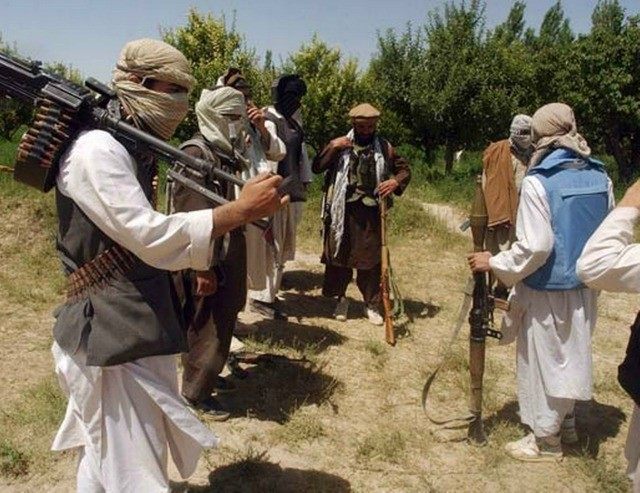In an effort that is being seen as undermining U.S. officials’ assurances that security forces were holding their own, Afghanistan is forming local militias and urging old warlords to provide military assistance in response to a fierce Taliban offensive in the northern part of the country, The New York Times reports.
Gen. John Campbell, the top U.S. commander in Afghanistan, disagrees with the move.
While testifying before a congressional panel on May 6, Secretary of Defense Ashton Carter praised the Afghan National Security Forces (ANSF), which include army and police units, adding, “We can see the kind of success we’ve striven for so long ahead in Afghanistan.”
“The plan to turn to irregular forces is stoking anxieties of factional rivalries and civil strife in a nation still haunted by a civil war in the 1990s in which feuding militia commanders tore the country apart,” notes The Times. “Some of the commanders involved in that bloodletting a generation ago now hold senior government positions and are encouraging the current effort to mobilize and rearm militias.”
“We have experienced this failed experiment of militia-making before,” Fawzia Koofi, a member of Parliament from Badakhshan, one of the northern provinces where the Kabul government is expected to form the militias, told NYT. “This will spread the war from house to house, starting rivalries as everyone begins arming their own groups.”
Citing Afghan and Western officials, The Times reveals that thousands of Afghans from the north are expected to form militias that would combat the Taliban in areas where the ANSF is losing territory or has had a small presence.
“The militia plan suggests diminished confidence in the Afghan Army and police forces — important national institutions in a country with few of them,” states the NYT article. “Indeed, the stated intent in creating nationalized forces was to replace the patchwork of militias around the country with a unified, better-trained body that was more accountable to the government.”
“Even as Afghan forces launched offensives in insurgent strongholds across the south this year, the military was caught flat-footed by the gathering Taliban forces in the north, according to local accounts and some officials in Kabul, the capital,” it adds. “By April, the Afghan Army was losing ground to the Taliban in several northern provinces.”
Northern Afghanistan was considered the nucleus of the anti-Taliban resistance in the 1990s.
The Taliban’s April assault on Kunduz, a northern city that borders Tajikistan, prompted the government of Afghan President Ashraf Ghani to reach out outside the ANSF, officials reportedly said.
Gen. Campbell expressed skepticism towards any plan that involved subsidizing warlords to deploy their troops.
If Afghanistan’s plan involved “going to a warlord and saying, ‘I need to take you, and pay you and move you, and go do something here’… We would not be supportive of that,” the general told reporters on Saturday.
Ajmal Obaid Abidy, a spokesman for the Afghan president, said that the Kabul government would not arm existing militias. Rather, it is planning to form new citizen militias.
“We still consider illegal armed groups as one of the key drivers of insecurity in the country,” he reportedly said. “What is being considered is selective voluntary citizens’ participation in the defense of the country against terrorists.”
Billions in U.S. taxpayer funds have been devoted to develop the Afghan security forces. Yet, according to the Special Inspector General for Afghanistan Reconstruction (SIGAR), the forces’ capabilities are an enigma.
The metric used to measure Afghan forces’ capabilities have changed so many times, no one truly knows if they are able to defend their own country, according to SIGAR.
“Afghan security forces do not have the ability to carry out operations in many provinces simultaneously,” candidly said Gen. Sher Mohammad Karimi, the Afghan Army chief of staff, last month, offering a stark assessment of his forces’ capacities.
The Afghan forces have already suffered a record number of casualties this year.
“In the first four months of 2015, more than 1,800 soldiers and police officers were killed in action, and another 3,400 were wounded, according to a Western military official, who spoke on the condition of anonymity to discuss figures not being officially released by the Afghan government,” reports The Times. “Those casualties are more than 65 percent higher than the amount during the same period last year, the official said.”

COMMENTS
Please let us know if you're having issues with commenting.